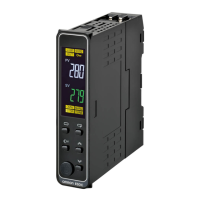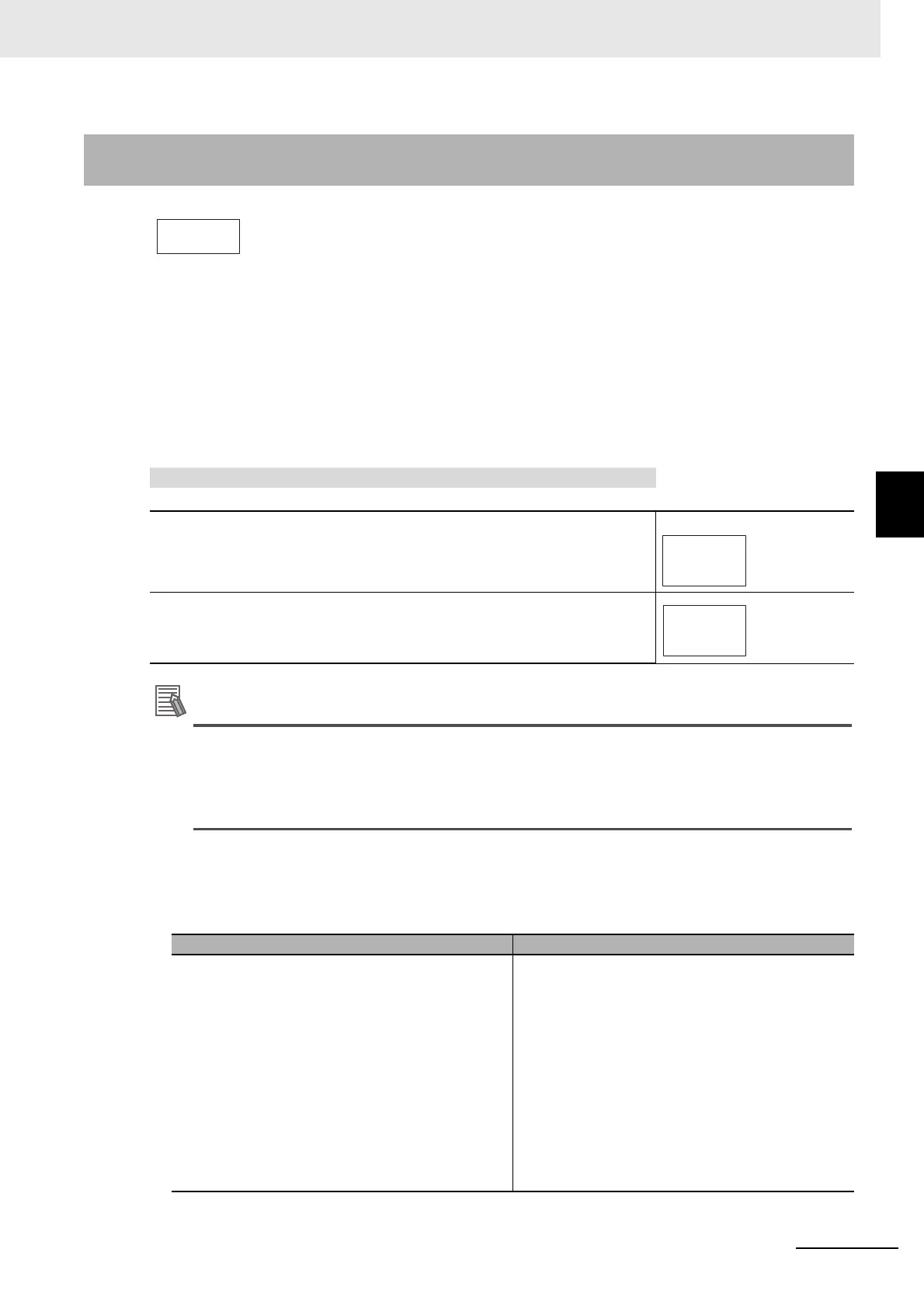4 - 27
4 Basic Operation
E5@C Digital Temperature Controllers User’s Manual (H174)
4-9 Determining PID Constants (AT, ST, Manual Setup)
4
4-9-2 ST (Self-tuning) (Not Supported for Position-proportional Models.)
PID Constants
When control characteristics are already known, PID constants can be set directly to adjust
control. The PID constants are set in the following parameters in the Adjustment Level:
Proportional Band (P), Integral Time (I), Derivative Time (D), Proportional Band (Cooling) (C-P),
Integral Time (Cooling) (C-I), and Derivative Time (Cooling) (C-D).
Startup Conditions
Self-tuning by step response tuning (SRT) is started when the following conditions are met after
program execution is started and the set point is changed.
*1 The previous SRT-implemented set point is the set point that was used for calculating the PID constants
for the previous SRT.
4-9-2 ST (Self-tuning) (Not Supported for Position-proportional
Models.)
ST (self-tuning) is a function that finds PID constants by using step response
tuning (SRT) when Digital Controller operation begins or when the set point is
changed.
Once the PID constants have been calculated, ST is not executed when the next
control operation is started as long as the set point remains unchanged.
ST (self-tuning) is enabled when the ST parameter is set to ON in the Initial
Setting Level.
When executing self-tuning, turn ON power for the load (e.g., heater) at the
same time as or before supplying power to the Digital Controller. If power is
turned ON for the Digital Controller before turning ON power for the load,
self-tuning will not be performed properly and optimum control will not be
achieved.
This procedure executes self-tuning (ST).
Operating Procedure
1
Press the M Key several times in the Initial Setting Level to
display st (ST).
Initial Setting Level
2
Press the U or D Key to select on (ST ON).
The default is ON.
* The TUNE indicator will flash during ST execution.
At start of operation When set point is changed
1. The set point at the start of operation differs from
the set point when the previous SRT was
executed.
*1
2. The difference between the temperature at the
start of operation and the set point is greater than
the larger of the following two: (Present
proportional band × 1.27 + 4°C) and the ST stable
range.
3. The temperature at the start of operation is lower
than the set point during reverse operation, and is
larger than the set point during direct operation.
4. There is no reset from input errors.
1. The new set point differs from the set point used
when the previous SRT was executed.
*1
2. The set point change width is greater than the
larger of the following two: (Present proportional
band × 1.27 + 4°C) and the ST stable range.
3. During reverse operation, the new set point is
larger than the set point before the change; and
during direct operation, the new set point is
smaller than the set point before the change.
4. The temperature is stable.
*2
(Equilibrium with the output amount at 0% when
the power is turned ON is also all right.)
*3
on
st

